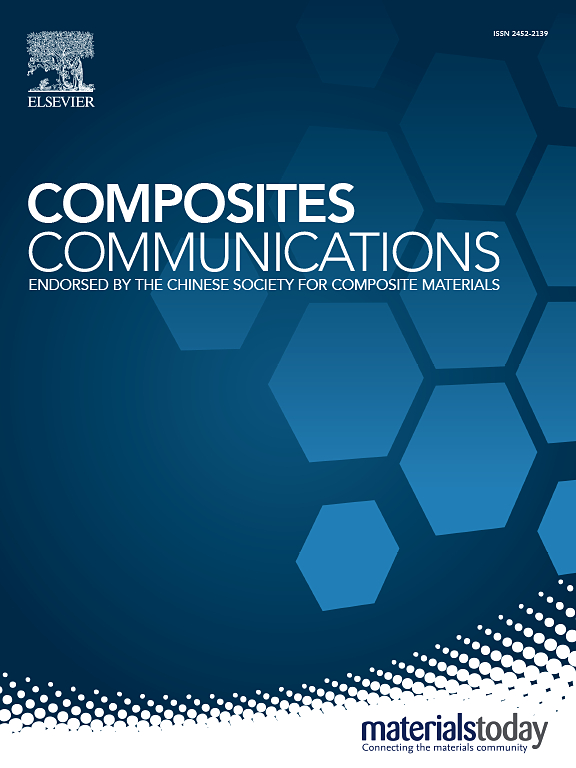Poly-D-lactic acid (PDLA) and schiff base dual modifications of the cyclodextrin-Based hierarchical fire retardants towards fire safe and UV-resistant poly-L-lactic acid (PLLA)
IF 6.5
2区 材料科学
Q1 MATERIALS SCIENCE, COMPOSITES
引用次数: 0
Abstract
β-cyclodextrin (β-CD) as natural polysaccharide compound possess abundant hydroxyl groups, which makes it an ideal fire retardant via structure design. Herein, the poly-d-lactic acid (PDLA) segments and a silicon containing Schiff base dual modified β-CD hierarchical fire retardants were prepared to simultaneously improve the fire retardancy, crystallinity and compatibility between polymer matrix and additive fillers. The poly-l-lactic acid (PLLA) composites with the presence of 4.5 wt% of βCD-g-PDLA@Schiff and 0.5 wt% of cobalt based metal-organic framework possessed limiting oxygen index up to 32 %, UL-94 V0 rating and a 40 % reduction in the peak heat release rate. The PDLA grafting modification acted as a nucleating agent to increase the crystallization rate and crystallinity of the PLLA. In addition, the UV absorption of PLLA/βCD-g-PDLA@Schiff + CoMOF samples in the range of 280–360 nm was enhanced by 28 % compared to pure PLLA. The present work provides a new idea for the development of PLLA-based green multifunctional additives, which is of great significance for expanding the application fields of PLLA.

求助全文
约1分钟内获得全文
求助全文
来源期刊

Composites Communications
Materials Science-Ceramics and Composites
CiteScore
12.10
自引率
10.00%
发文量
340
审稿时长
36 days
期刊介绍:
Composites Communications (Compos. Commun.) is a peer-reviewed journal publishing short communications and letters on the latest advances in composites science and technology. With a rapid review and publication process, its goal is to disseminate new knowledge promptly within the composites community. The journal welcomes manuscripts presenting creative concepts and new findings in design, state-of-the-art approaches in processing, synthesis, characterization, and mechanics modeling. In addition to traditional fiber-/particulate-reinforced engineering composites, it encourages submissions on composites with exceptional physical, mechanical, and fracture properties, as well as those with unique functions and significant application potential. This includes biomimetic and bio-inspired composites for biomedical applications, functional nano-composites for thermal management and energy applications, and composites designed for extreme service environments.
 求助内容:
求助内容: 应助结果提醒方式:
应助结果提醒方式:


